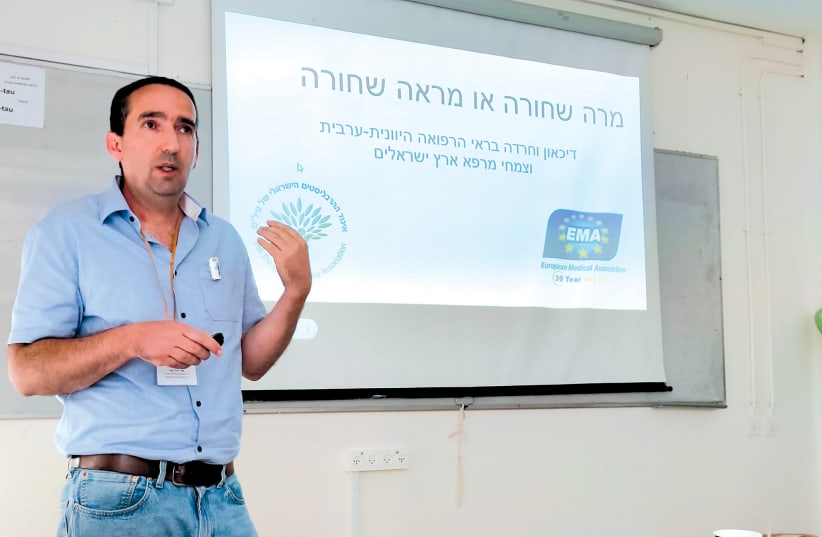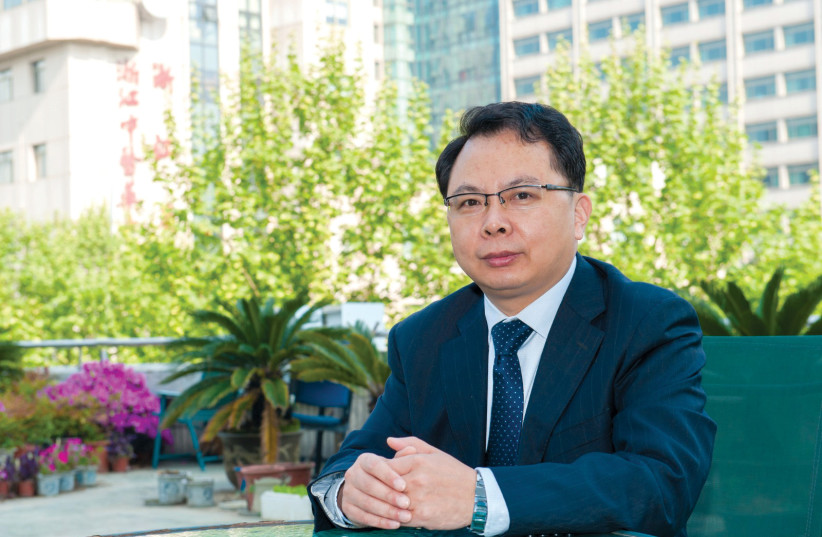Maccabi patients interested in Chinese herbal medicine or a Tui na massage might visit a clinic near their home in a few years’ time and have their prescription expertly filled by an AI within minutes or ask to lie down as robotic arms offer them healing contact therapy.
This is thanks to a partnership between Zhejiiang Provincial Hospital of Chinese Medicine and the Israeli healthcare provider. “In China, they are two steps ahead of the entire world,” Maccabi Tivi (natural) CEO Devora Hassid told The Jerusalem Report. “We Israelis are learning from them.”
Noting there was a surge of interest in all forms of alternative therapy during COVID-19, Hassid said the most commonly requested treatments are Chinese acupuncture, Tui na, and Shiatsu, a Japanese system of treating the macro (body) via the micro (the foot) by applying pressure at key points.
“Traditional Chinese medicine is the most sought after method,” Hassid added. “When I entered my role three years ago, we had 850 workers. Now we have 1,450, with 13 new clinics opened last year alone.”
Practicing traditional Chinese medicine in Israel
Zhejiiang Hospital, which had been focused on traditional Chinese medicine since the 1950s, has been working in partnership with Maccabi since 2016. China, explained traditional medicine expert Gidi Gur, strongly believes in the value of its traditional medicine. To promote it globally, Beijing divided respective world markets and appointed specific hospitals in China to engage with them. Prof. Gao Xiangfu, president of Zhejiiang Hospital, is in charge of Israel.
When asked how could we, living in a semi-arid desert strip of land with access to the Mediterranean Sea, benefit from a unique medical body of knowledge hailing from the very different climate of China, Prof. Xiangfu pointed out that there are various Chinese provinces that have similar weather to ours. He mentioned Gansu in northwest China and Shaanxi.
We spoke thanks to Chen Xiaoqin, who translated from Chinese to English. It would take a little time to teach robots how to insert needles correctly because robotic hands are not precise enough to hold a needle, he explained.
However, what the robot is currently extremely good at is taking the clinical data collected by the physician and offering a prescription of herbal remedies which, at this point in time, are a 90% match to what a human expert would suggest.
“In the space of two to three years, this AI would be shared with Maccabi Tivi,” he said.
Seeing as robotic arms do not get tired, such progress would be beneficial in offering at least immediate relief to many who might need it.
Gur, who studied under Prof. Xiangfu and greatly respects him, explained that the complex universe of traditional medicine can be likened to the various roads connecting people to their respective destinations. Gur’s Moav Clinic in Arad also has a partnership with Zhejiiang Hospital.
“His hospital is like Highway Six,” he said with a smile. “It is a state-operated means of getting to a particular place, or the mainstream if you like. Naturally, there are many ways of getting to the same location as well. There is more than one single truth.”
Gur deeply respects traditional Chinese medicine and is fluent in Chinese; but he says that one cannot simply “become Chinese,” even if the goal is to get better.
If traditional means connected to the earth and to one’s one unique legacy in terms of body type and genetics, Israelis are different from the Chinese.
“Yes,” he said, “it is possible to recreate conditions by heating and cooling spaces, for example, or importing the roots of various plants. That is partly why Chinese medicine is so powerful and has been so for so long. This process of importing texts and herbs was made possible via the Silk Road.”
Yet, for him, it is also vital to note how medical knowledge crossed languages and cultures from Greek to Farsi, and from Farsi to Arabic and Hebrew. China was, and is, very important, but so were India and Persia.
“We are used to thinking about the West as high and the East as low,” he said. “This is false.”
The first anatomical atlas in color, the 14th-century Mansur’s Anatomy, was created by Mansur ibn Ilyas in Shiraz. Avicenna penned The Book of Healing in 1024 Bukhara, an important meeting point for trade and knowledge flowing from China to the West and from the West back to the Middle Kingdom. Jewish men of medicine were aware of his importance and studied the work intensely. A Hebrew translation was printed in Naples in 1491.
True, these works are very young when compared to the classic Chinese work Huangdi Neijing (The Yellow Emperor’s Classic of Medicine), which predates the birth of Christ, but wisdom is not limited to just one land.
“Going backward does not, by itself, lead us to progress – to deeply study the principles of a wide, holistic way of thought, does,” Gur said. “Our current reality demands it.” ■

